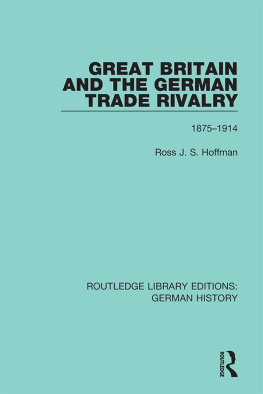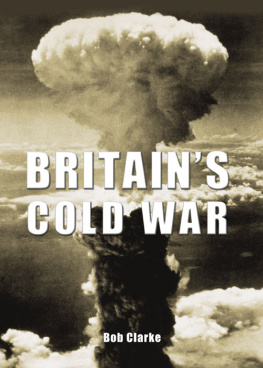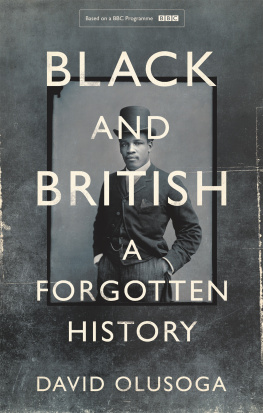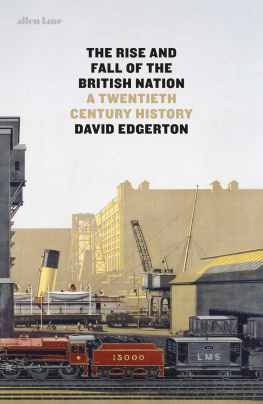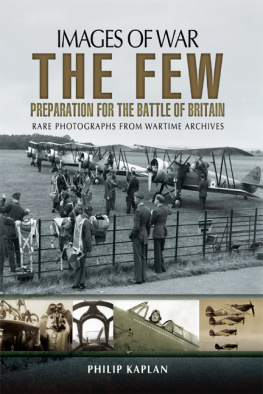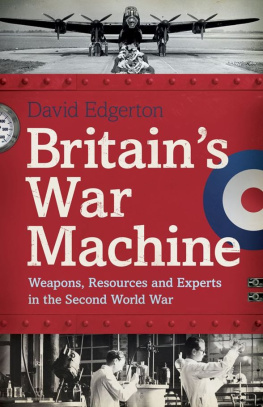Britains War Machine
DAVID EDGERTON
Britains War Machine
Weapons, Resources, and Experts
in the Second World War


Oxford University Press, Inc., publishes works that further
Oxford Universitys objective of excellence
in research, scholarship, and education.
Oxford New York
Auckland Cape Town Dar es Salaam Hong Kong Karachi
Kuala Lumpur Madrid Melbourne Mexico City Nairobi
New Delhi Shanghai Taipei Toronto
With offices in
Argentina Austria Brazil Chile Czech Republic France Greece
Guatemala Hungary Italy Japan Poland Portugal Singapore
South Korea Switzerland Thailand Turkey Ukraine Vietnam
Copyright 2011 by David Edgerton
First published in Great Britain in 2011 by Allen Lane.
First published in the United States in 2011 by Oxford University Press, Inc.
198 Madison Avenue, New York, New York 10016
www.oup.com
Oxford is a registered trademark of Oxford University Press
All rights reserved. No part of this publication may be reproduced,
stored in a retrieval system, or transmitted, in any form or by any means,
electronic, mechanical, photocopying, recording, or otherwise,
without the prior permission of Oxford University Press.
Library of Congress Cataloging-in-Publication Data
Edgerton, David.
Britains war machine : weapons, resources, and experts in the
Second World War / David Edgerton.
p. cm.
ISBN 978-0-19-983267-5 (alk. paper)
1. World War, 19391945Great Britain. 2. World War, 19391945Economic aspectGreat
Britain. 3. World War, 19391945Technology. 4. Great BritainArmed ForcesEquipment
History20th century. 5. Great BritainArmed ForcesWeapons systemsHistory20th
century. 6. Great BritainHistory, Military20th century. 7. Industrial mobilizationGreat
BritainHistory20th century. 8. Military art and scienceTechnological innovationsGreat
BritainHistory20th century.
I. Title.
D759.E44 2011
940.540941dc23
2011025596
1 3 5 7 9 8 6 4 2
Printed in the United States of America
on acid-free paper
For Claire
Contents
Illustrations
1. We will win because we are the strongest (IWM PST8432)
2. Glasgow Empire Exhibition, 1938 (SC 1072395 Courtesy of RCAHMS. Licensor www.rcahms.gov.uk)
3. Britains global shipping distribution, 24 November 1937 ( National Maritime Museum, Greenwich, London G201:1/29/F0516)
4. The MS Dominion Monarch (Getty Images 104109082/Photographer, Humphrey Spender)
5. A Liberty ship (IWM A27518)
6. Filling shells in India (Library of Congress LC-USE6-D-008637)
7. Munitions poster (IWM PST16028)
8. Churchill with trench-cutting machine, November 1941 (IWM MH957)
9. A Z-battery of anti-aircraft rockets (IWM H10791)
10. British tanks in 1941 (Library of Congress LC-DIGfsa-8e09217)
11. A propaganda poster from late 1940 (IWM PST14028)
12. Tanks for Russia week, September 1941 (Library of Congress, LC-DIG-fsa-8e09321).
13. A 1942 production poster (IWM PST14378)
14. Potatoes as a substitute for imported wheat and flour (IWM PST743)
15. A merchant unloads flour into lighters, 1943 (IWM TR1427)
16. Bacon from the USA, 1941 (Library of Congress LC-USW 33-030756-C)
17. Corned beef from Uruguay (Getty Images 50456526/Photographer Hart Preston)
18. A refugee Belgian fisherman working out of Brixham (IWM TR1868)
19. Sugar beet harvesting (Library of Congress LC-DIGfsa-8e09323).
20. Land Army women being trained to saw larch poles (IWM TR914)
21. The synthetic aviation spirit plant at Heysham (Churchill Archives Centre, Hartley Papers)
22. The Anglo-Iranian refinery at Abadan (Getty Images 50496057/Photographer Dmitri Kessel)
23. HMS Howe, 1942 (IWM A10381)
24. Inspecting aero-engines at Rolls-Royce Hillington, 1942 (Getty Images 78962544 Popperfoto)
25. A munitions factory in Beverley, 1944, painted by Frederick William Elwell (IWM ART LD4908)
26. The Rolls-Royce Hillington factory from the air, 1940 (SC 458782 Courtesy of RCAHMS/RAF Air Photographs Collection) (Licensor www.rcahms.gov.uk)
27. Forging a big gun, Sheffield, 1941, painted by Sir Henry Rushbury (IWM ART LD961)
28. Avro Lancaster bombers nearing completion at the A. V. Roe & Co Ltd factory, Woodford, 1943 (IWM TR1386)
29. Sir John Anderson (Getty Images, 3141763)
30. Relative bombing weights (from Lord Tedder, Air Power in War, London, 1947)
Maps and Figures
)
Tables
Preface
Hasnt everything interesting already been said about Britain in the Second World War? Do we really need another book on this subject? I hope to show that we do; that much remains unsaid; and that we need to reconsider, often drastically, many important arguments. In the course of researching and writing this book I myself have been astonished by what I have found, and I say this as someone who for thirty years has been criticizing received views about twentieth-century British history, particularly in relation to warfare, to the state, and to science and technology.
I hope that by the time you have read even a small part of this book, you will feel that the new evidence and interpretations it contains will make you rethink the history both of the war and of Britains place in it. These are not topics to be dealt with lightly. What is known and what is believed about Britain in the Second World War have mattered to many people, for many reasons. Such views have profoundly affected British decisions to go to war, from Suez to Iraq. They shape, not surprisingly, the ways we understand recent British history, for the war is taken to be a pivotal event in that history. Indeed much writing about the war has been not just about the conflict itself, but about the entire history of twentieth-century Britain.
In these pages I shall describe an image of wartime Britain and its fighting power that will be unfamiliar. I shall describe the Britain that went into the war and the one that came out in terms that are quite different from most other accounts. I see the war not as something that tested and re-created the nation; which changed much, and yet did not change everything. Instead I see it as a distinctive period, characterized by sudden yet often temporary changes.
My account gives a central place to the armed services and Britains method of waging war. Most distinctively it is based on a new material reckoning of the war effort which respects the particularities of the extraordinary global war in which Britain was a great player. I also reject the sentimental view, still widely encountered, that the war was, for Britain, a good thing. We now too readily associate the evils of war with war crimes; yet it is the fact of war itself which is the greatest crime against humanity. That the Second World War was perhaps necessary does not prevent its being a terrible disaster for humankind, and even being on the right side did not mean it was good for those who waged it.
Camden Town, December 2010
A NOTE ON QUANTITIES
This account has a lot to say about the material, weapons, resources and armed services so a simple guide to some of the measures used in describing them might be useful. This note may be skipped, but may be usefully referred back to when a quantity is not fully self-explanatory.
Next page

